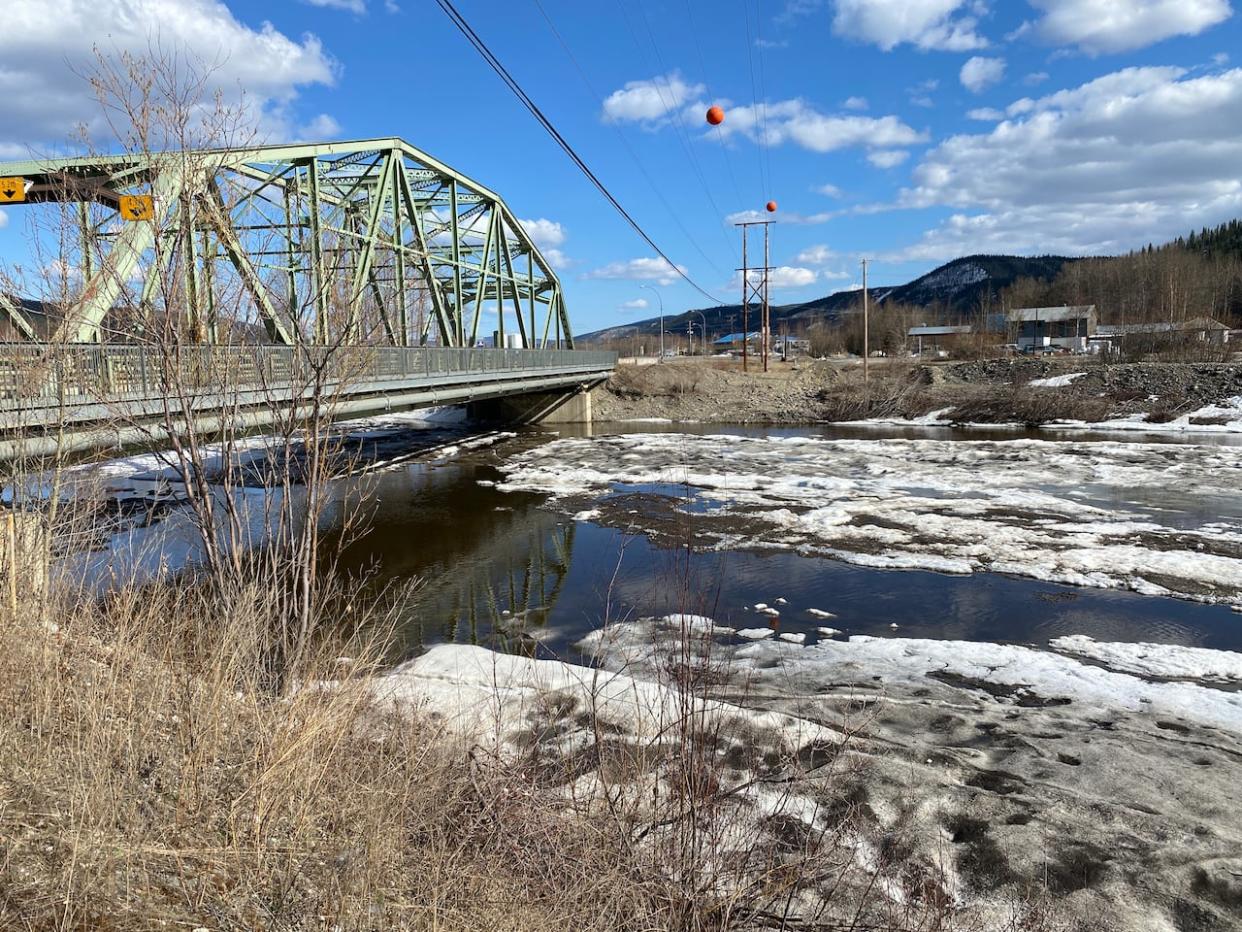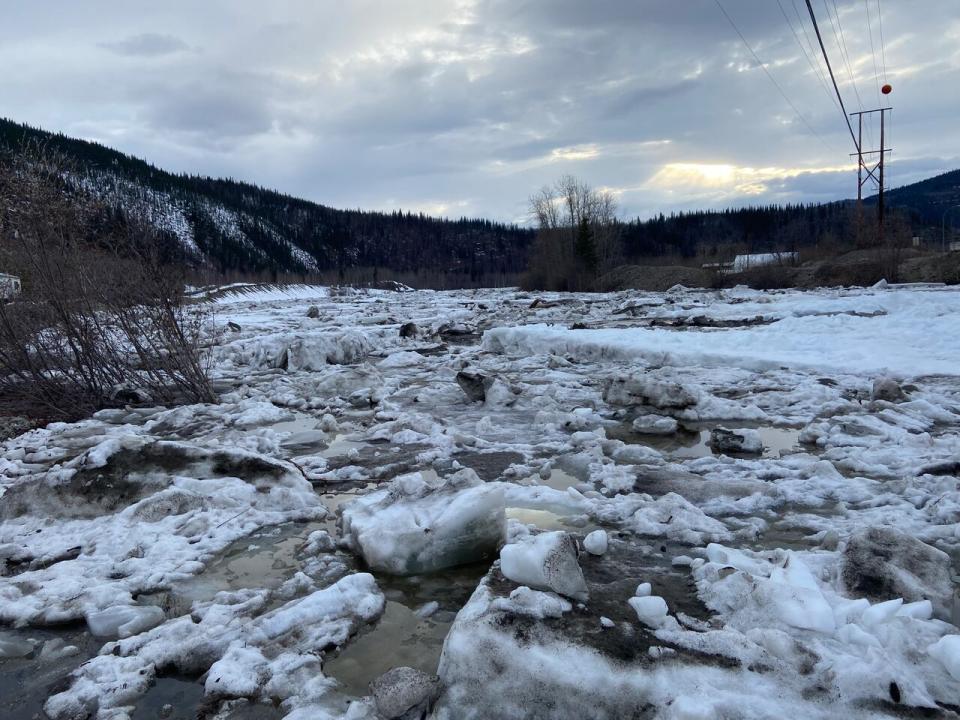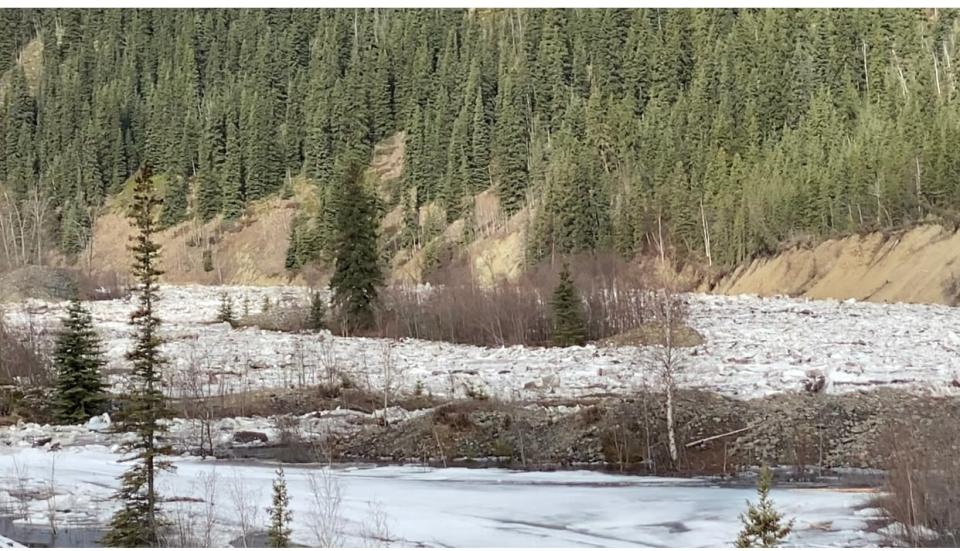Flood response was better this year in Yukon's Klondike Valley, officials say

A review into how emergency officials handled this year's flood season in Dawson City, Yukon, found that communications had improved since 2023 — but not all residents agree.
"I think things went in a positive manner," said Paul Robitaille, Dawson City's emergency information officer.
"There was good communication and work done prior to the flooding season that got a lot of the agencies in the same room, which is really helpful...to talk about who would do what, if things got to a certain point."
Residents in the Klondike Valley were under an evacuation alert for several days last month and a flood warning was issued for the area because of ice jams on the Klondike. Within days, the risk of flooding had passed and the advisories were lifted.
The "after-action review" involved all the agencies involved in the monitoring and emergency response. Part of the review involved comparing this year's response to last year's, when many residents living along the Klondike River found their homes surrounded by water after a large ice jam caused water to back up.
People living in the Henderson, Rock Creek, and Dredge Pond subdivisions were hit the hardest last year.
One common concern heard from residents at that time was that there was little communication between residents and emergency officials.

An ice jam near Bonanza Bridge earlier this spring. (Chris MacIntyre/CBC)
Robitaille said this year, the town took steps to ensure information on the developing situation was relayed to the public on numerous platforms, including Dawson's local radio station, a newly-installed emergency broadcast frequency, and on social media.
He said the town's emergency plan was also updated, and public meetings were held to explain the plan to residents.
Robitaille also noted that sandbag stations were set up at various locations around the town so that people could prepare themselves long before an emergency would happen.
"I did see improvements this year," he said, acknowledging it was "a different, and less challenging incident" compared to 2023.
"Hopefully people are becoming more aware and educated as to how they can be prepared, and that we as agencies involved are becoming more experienced and better prepared for future incidents ourselves."
'The damage was already done on my property'
Kim Biernaski, who lives on Prospector Road, close to the Dredge Pond subdivision, said she doesn't think there was much of a difference in the town's response this year. Her property was among the few areas to be affected by the water this year.
She says she wasn't home when her property flooded but when she got there the water level was already at her knees.
"Officially, that jam that got me to go under wasn't identified until it had let loose and the damage was already done on my property," she said.
"Last year, the fire chief said he didn't know this property existed. This year, he did know but he didn't come down to have a conversation, or a site assessment, or anything — before the flood, during the flood, or after the flood."

An ice jam between the Klondike Highway bridge and the Dredge Pond subdivision in late April. (Chris MacIntyre/CBC)
Biernaski said the only official information she received was from the Yukon Government's hydrologist, and it was only after she approached them and requested to be kept in the loop.
Biernaski said she also drove the 40 kilometres to the Dempster Highway corner, twice a day, to look at the ice upriver for herself.
She said one of the flaws with the town's emergency broadcast system was that she couldn't actually hear it from her home. She said she would have to go to the top of her driveway to listen, and says the message broadcast was only updated once or twice a day, which didn't help her situation.
"It was just a repetitive loop of yesterday's news," she said. "I'm not sure what they think is prepared, because I really didn't see any improvement from the City of Dawson."
Biernaski said the town should again follow up with residents to talk about what worked and what didn't, before declaring a successful flood-prevention season.
"I really think that feedback from the properties that were affected is paramount," she said. "You can't come up with a plan without boots on the ground, and talking to individuals to see what's at stake.
"When I asked questions, I was constantly told there was an emergency plan. When things started happening here this spring I wasn't a part of their emergency plan."
Robitaille said what happened to Biernaski's property is unfortunate and he can understand her frustration.
He said all public feedback and criticism is welcome as it will only help improve the way the town's emergency officials respond in a crisis.
"That's how we improve the plan, is by hearing from residents," he said. "There's always going to be items that could be improved upon."

